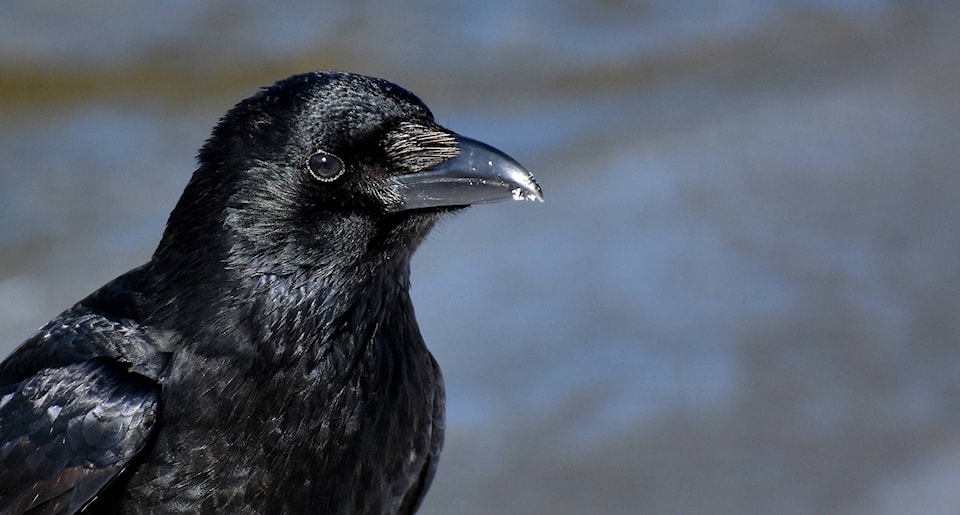“Birdbrain” was once used as an expletive. More recent wisdom shows that a group of birds called corvids are especially intelligent. These include many common Okanagan species like ravens, crows, magpies, Clark’s Nutcrackers, Steller’s Jays and Canada’s new national bird, gray jays (sometimes called whiskey jacks). First Nations people have legends about ravens and their many tricks.
A pair of ravens frequented our platform bird feeder during 2016/17 seeking scraps. The two showed up early every morning. One was much bolder than the other. Though ignorant of its sex, because ravens look alike, we named “her” Lenore after the lost love in Edgar Allan Poe’s poem The Raven. Little did we know how prophetic that would prove.
Before long we could call the birds in and could almost, but never quite, get Lenore to hand feed while her mate sat nearby waiting for his share before magpies could come in a snatch the leftovers. The ravens did share with each other. We saw them exchanging food mid-air. They also cache extra food. Ravens pair for life but will take a new mate if one dies.
On May 10 border collie Willy and I were hiking in the pine forest uphill from the house and scared-up a raven that was dragging its right wing. We quickly exited the area. A few days later at least 14 ravens were croaking loudly and circling among the pines. Crows will often do this if they spot an owl. Ravens mass when there is a carcass to be had. The noise went on periodically for a second day and I saw the injured raven walking through the forest. It almost appeared that the ravens were escorting the injured bird.
A couple of days later we were convinced it was Lenore when the bird hopped onto the patio. What to do? Dr. Harvey, the local vet who helped injured birds had moved away. We knew SORCO, the South Okanagan Rehabilitation Centre for Owls, took only raptors, such as eagles, osprey, hawks, falcons and owls. We contacted them anyway and it was suggested that we take Lenore to the Kamloops wildlife rehabilitation centre. The agile Lenore was not willing to be caught even if we had a net.
In the weeks ahead Lenore’s presumed mate and other ravens would bring her food, probably from the dump! She would regularly appear on the patio for food and would toddle up and down the hill to cache it. She became adept at climbing Ponderosa pine trees, hopping up branch by branch until she was in a safe spot.
We had a 10-day trip planned for late May and feared Lenore wouldn’t survive our absence but the day after our return she hopped onto to the patio. We were amazed. She visited every few days.
Lenore remained wild but unfortunately, this story has no happy ending as she would eventually disappear. June 30th was the last time we saw her 10 metres up a pine being mobbed by three Steller’s Jays.
We never discovered how her wing was injured. Perhaps she was shot. Too many people hate crows and cannot tell a crow from a raven. Ravens are much larger, with a heavy beak and a boat-shaped tail.
We think it’s her mate that occasionally flies over and checks the feeder but never lands. “Then the bird said, ‘Nevermore’ ”.
The South Okanagan Naturalists’ Club meets the fourth Thursday of most months at 7 p.m. in the Penticton United Church, Main Street. At the March 22 meeting Dr. Candice Gartner, projects co-ordinator, community services, RDOS will talk about the Regional District heritage register and how groups can participate in its development. The public is welcome.
Jim Ginns is a member of the South Okanagan Naturalists’ Club but the views expressed here are his own and do not necessarily reflect the position of the club.
